When a child is spinning out of control, from isolation toward destruction, it feels “impossible” for life to get better – for the child and their parents and community members. With permission of a courageous young person and his family, here is a real story of forging a path back toward life, and how emotional intelligence helped clarify a way forward.
Background
Sam slides from “not fitting in” toward a path of self-destruction
As a kindergartener, Sam’s parents noticed signs that their son was struggling, but only in retrospect could they see that these signs were actually huge “red flags” of a change so urgently needed. Sam didn’t quite fit in anywhere. He separated himself from others, and gradually the distance turned to frustration and resulted in a breakdown of how to communicate effectively with anyone.
By the time he was 11, Sam’s behavior had escalated. He wouldn’t listen to adults, and he was a distraction in class. He had major “melt downs” at home with explosive and depressive behavior, and then it got worse. Sam’s chaos became family chaos. They were all in pain, even despair, and couldn’t see a way out. The parents’ long-standing struggles and conflicting perspectives about parenting escalated.
Soon after, Sam became obsessed with weapons. He started talking about hurting people and was frightening to be around. At this point, his parents saw a looming crisis and realized that something had to change, immediately. They chose to take him out of his private school and find an educational consultant, Gail Curran.
Even with incredibly supportive, well-educated parents, attending a “great” school with the support of an caring school counselor, Sam was drowning. He was suffering in silence without coping skills and his frustration continued to come out in destructive behaviors. With the help of their consultant, Sam’s parents struggled to find an option for their son; even in the large metro area where resources are abundant, nothing seemed to help.
Getting the EQ Story
Without emotional literacy, Sam “communicates” with destructive behavior
I, Michele Royan, have known Sam since he was just two years old, and had worked with the family as a counselor. Seeing Sam in crisis, and the family’s dissolution, broke my heart. But with EQ, I knew there was hope!
Sam was completely disconnected from his older brother, and was becoming increasingly lost in his dark space – a place so vulnerable and lonely that he didn’t really believe there was a way out. He suppressed his pain, and had no words – no emotional literacy – to express his pain and desperation. Hence, more destructive behavior. As the issues grew over time, these struggles had become “normal” to the family and therefore the level of crisis was not easily seen from within.
Thankfully, Sam’s parents realized this was a crisis in time – and took drastic action immediately. Because of our longstanding relationship, I invited Sam to take the youth version of the Six Seconds Emotional Intelligence Assessment – SEI-YV – as a way to find some perspective on himself, his pattens and his choices. He sat, head on table, largely silent for over thirty minutes. I sat next to him, and slowly he answered the questionnaire, but he showed no emotion. It was as if the doors of his heart were shuttered and barred.
After using the SEI-YV tool with over 1000 students, I have never seen results like I did with Sam!
Sam’s “Life Barometer” Scores
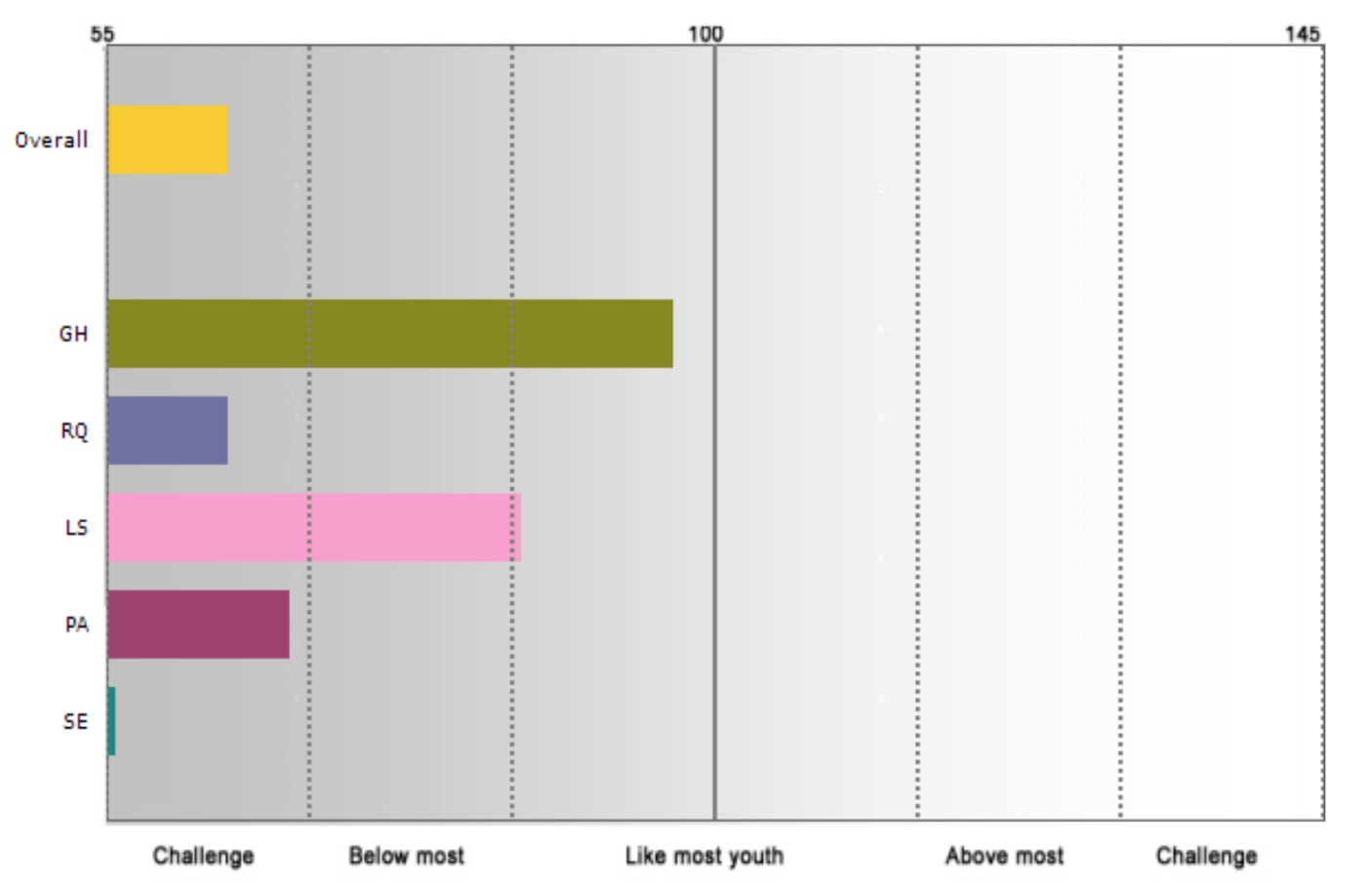
The SEI-YV begins by reporting the youth’s self-assessment of their “Life Barometers” – the key ingredients for a healthy, successful, positive life. These include , Good Health (GH), Relationship Quality (RQ), Life Satisfaction (LS), Positive Achievement (PA), and Self-Efficacy (SE). To the left were Sam’s scores that May, 2016.
The RQ – Relationship Quality – speaks to his sense of near-total isolation & disconnection. The SE – Self-Efficacy – reflects his nonexistent sense of personal power… his profound helplessness and despair.
The tool goes on to identify emotional intelligence competencies that are linked to the outcomes above. According to the SEI-YV Technical Manual, the “Barometers” above are predicted by scores on emotional intelligence. There are eight competencies in the model, below are Sam’s initial responses to these competencies:
Sam’s EQ Scores
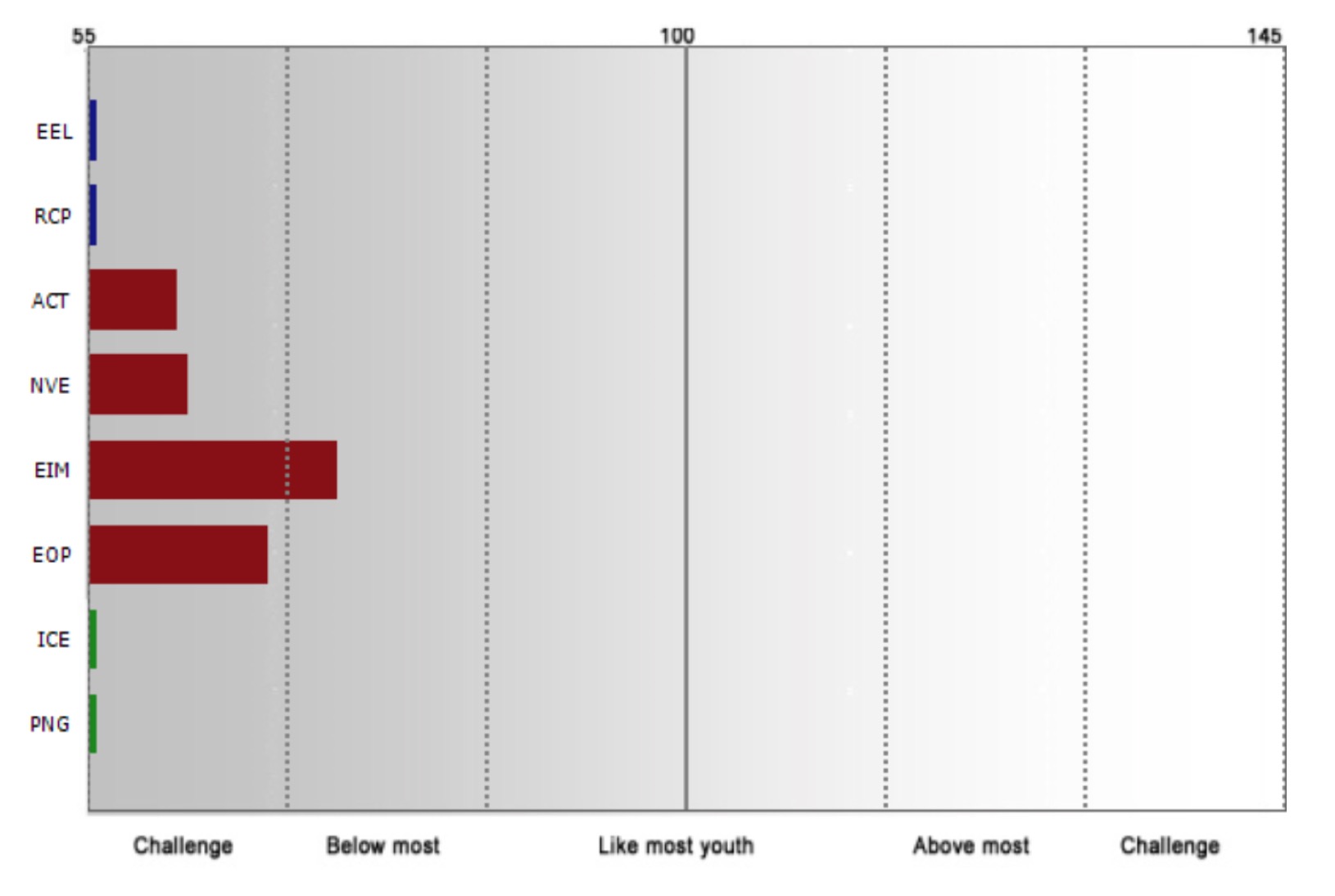
The first two competencies are the “Know Yourself” pursuit about building self-awareness.
EEL, Enhance Emotional Literacy, is the ability to identify and understand emotions. Sam had no vocabulary to articulate his feelings – but perhaps even worse, he didn’t understand them. Feelings were “happening to him” and he had no idea what to do with these difficult and complex emotions. Could he ever make sense of his world and utilize his feelings to make meaning of his world.
RCP, Recognize Patterns, means identifying recurring reactions. Sam’s lack of self-awareness (fueled, no doubt, by his pain) was so low that he did not see how he kept making the same kinds of destructive choices over and over.These first two competencies form the “Know Yourself” Pursuit, focussing on Self Awareness.
The next four competencies make up the “Choose Yourself” pursuit, or how an individual self-manages or shows up every day.
ACT, Applying Consequential Thinking involves weighing the costs and benefits of decisions and responding, rather than reacting in decision-making. Sam was not likely to consider the impact of his choices ( or even that he was making a choice). He was very impulsive.
NVE, Navigating Emotions, means having some tools to use to travel from a strongly unpleasant feeling to a more productive feeling. It means being able to create productive emotions for self or others, both of which Sam struggled with. “Navigate” implies a process for positive change through challenges. Sam had experienced a lot of melt-downs.
EIM, Engage Intrinsic Emotions, is gaining energy from personal values & commitments versus being driven by others. Sam was not highly motivated and when he was it was often motivated by bribes or punishment. Sam was able to muster personal energy only to pursue things that he was interested and engaged
EOP, Exercise Optimism, allows seeing beyond the present and take ownership moving forward. When Sam was faced with challenges, he was likely to blame others. He over emphasized his problems, and as evidenced by his extremely low Self Efficacy in the Life Barometers, he felt almost totally powerless.
The final competencies form the “Give Yourself” pursuit which fuels a sense of connection to others and purpose.
ICE, Increase Empathy, is recognizing AND responding appropriately to others’ emotions. This was a huge struggle for Sam. Empathy is the key to understanding others, forming enduring and trusting relationships. Sam often minimized, ignored or misunderstood others’ feelings. He was distrustful and felt others’ didn’t “get” him.
PNG, Pursue Noble Goals, connects daily choices and behaviors with a sense of purpose. Sam seemed to often feel aimless, focused on his day to day needs to relieve his pain. He was easily distracted or swayed by momentary interests.
His mom and dad saw these results as validation, and now had the information needed to be able to positively confront the seriousness of Sam’s struggle.
Finding a specialized consultant was a turning point. Gail Curran has a long history helping families in pain by finding therapeutic programs that specialize in adolescent treatment. There are hundreds of therapeutic wilderness programs and residential treatment centers where young people step away from their daily lives and into a space designed to catalyze positive growth. Confronted with the awesome power of nature, and the interdependence required to live in the wilderness, along with the skills and support of qualified leaders, programs like this can reach kids like Sam. As a result, thousands of children who had given up hope find a path to reconnect with themselves, one another, their families, and the world.
Like many children, Sam did not want to go. But ultimately, his family gently-but-firmly insisted, and escorted him into the wild.
At 11 years old, Sam went to an intense wilderness treatment facility in Idaho. He spent 87 days in the wilderness with coaches who supported his growth and development. Sam was recognized by his counselor/therapist as ‘the most challenging kid ever enrolled’ , and his counselor stated that he was highly resistant to change. Without having a growth mindset, change was difficult, and the family felt stuck. A portion of Sam’s success was due to being in nature and having to handle the challenges of the day in real time. Without the conveniences and distractions of everyday life, Sam was allowed to process his challenges and flourish as a change agent to learn the needed skills of problem solving and consequential thinking. The program allowed him time to start over, to ‘reboot’ and realign his decisions with the outcomes he was predicting and planning for in his 11 year old life.
During the 87 days in the wilderness, there was much resistance to some expectations. It was important for Sam to take ownership of his situation. With the expert guidance of his therapist, trust was eventually forged, but not without a great deal of resistance.
His educational consultant took time to visit him and support him in his process of attaining the skills needed to transition to a Residential Treatment Center. Sam began to find words to describe his pain, he learned to incorporate mindfulness into his day, and he was now able to reflect to support his growth.
Intervention
Sam begins to find words and opens up new choices
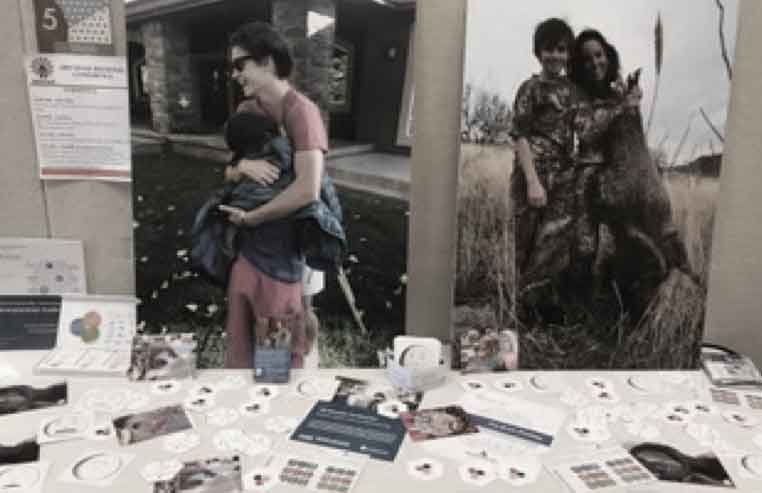

Seven months after his initial SEI-YV, he took the assessment again, when he was home for Christmas break. This time, he smiled, made sustained eye contact and was open to conversation. In under 10 minutes, he finished the questions.
Initial Assessment


Second Assessment
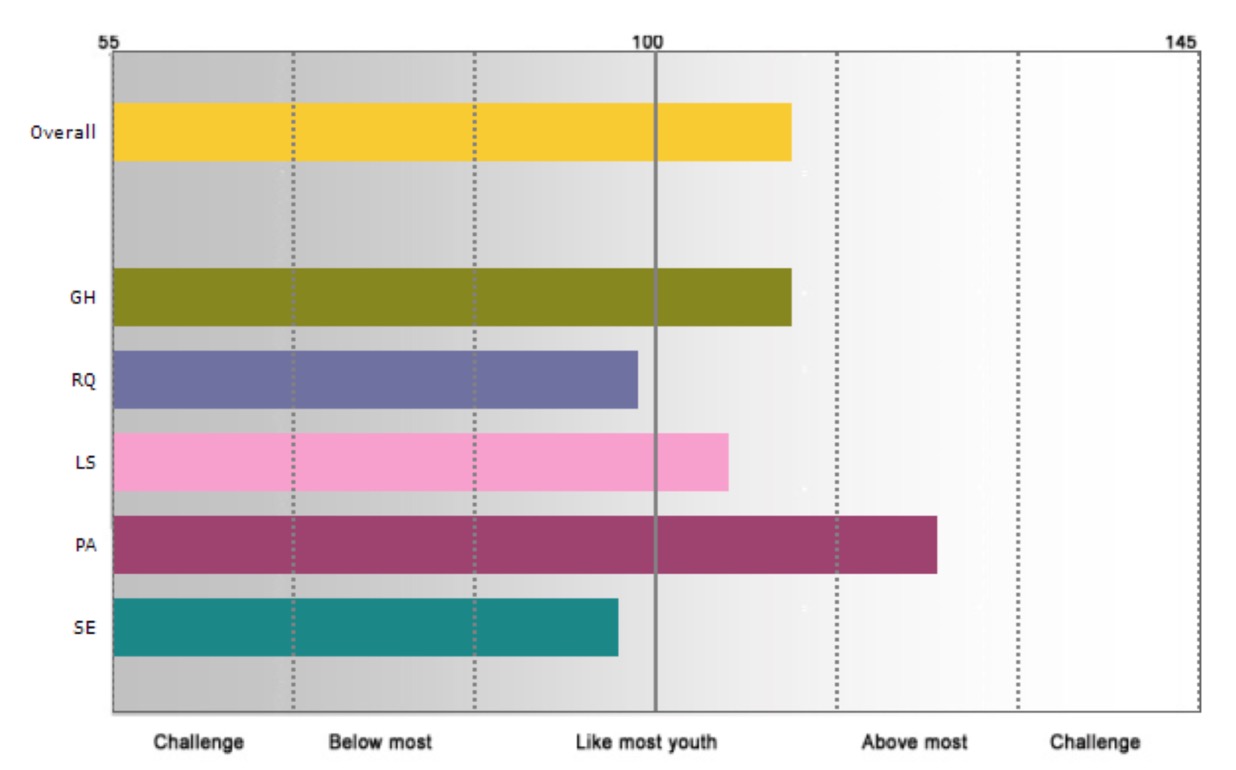
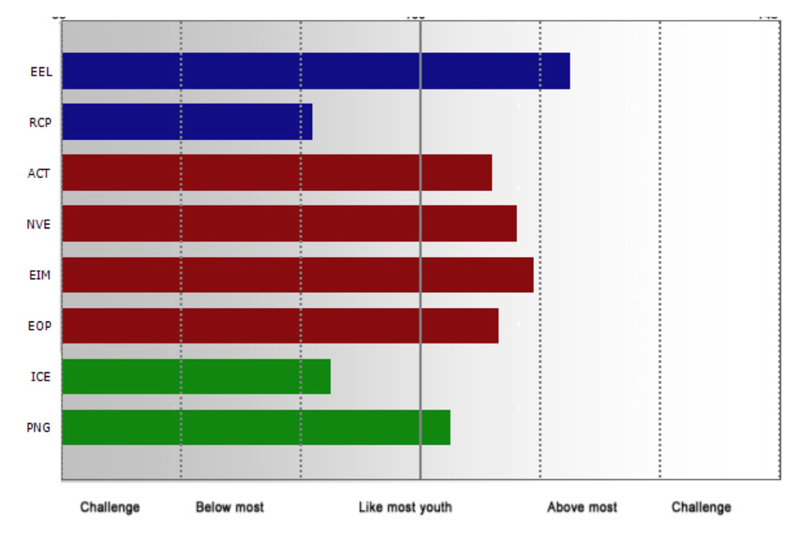
Results
Meeting the person he is becoming
Sam’s mother articulated one of the key benefits of this assessment process: Making the invisible visible. Validating both Sam’s despair and his growth, having the data in a graph gave the family a way to contextualize Sam’s experiences… and to celebrate the results of his hard work.
The assessment results mirror his change: Remember how Sam was so adamantly opposed to going to the program? Last summer he volunteered to go back for two weeks, as a counselor-in-training. He told me he would considering doing this each year as a way to give back and also to stay connected with the person he has become in this process. Sam was continuing to be self-aware and was becoming mindful of the process he had gone through in his transformation. Early signs of increased empathy were appearing, in wanting to help others and Sam was beginning to reach for a noble goal for his life.
During his return visit the following summer, he observed a new student arriving to the program and had flashbacks of his drop off. Sam was able to explain how this process felt for him and could empathize with what this young, struggling boy was going through. He remembered how difficult the process had been and reached out to connect and comfort the boy.
Sam is an avid skateboarder and losing this privilege was not something he enjoyed! With his learned EQ tools, Sam was increasingly able to take a pause when challenges would arise. He could now read the situation and find a way to respond without reacting , in order to get through the challenge and not lose his skateboard. Most kids have something that they will work for, their collateral, and knowing this collateral is key to supporting their growth and change.
Key Insights
Share the language of feelings, and then…
Sam’s journey offers important lessons for parents and teachers working with others through their challenges – and three powerful videos to continue the conversation:
Measure what matters. Confront reality in a predictable way: Use data to help make it clear and focused. Put your energy into what matters. Kids heading into this level of crisis rarely get there because they don’t know how to multiply fractions. Let cognitive and academic testing become secondary. Get back to basics in education and parenting – connecting with people and forming positive relationships, values and manners. (More good advice on this from Jack Ma)
Key EQ Competency: Enhance Emotional Literacy
Break broken patterns to create better patterns. Confront reality in a realistic way: Slow down! Reflect and get out of the comfort of the patterns in your life, as many of them are not working. Find new ways to practice better skills that get you what you want and can plan for. Make small decisions that lead to a better today and tomorrow. Mountains are not peaked in a day, but with each step you get closer to the top! (Watch Prem Rawat for more)
Key EQ Competency: Recognize Patterns
Take the time to sustain your new ways. Confront reality in a positive way: every day matters! But before you can accomplish something, you first need to expect it of yourself. Take time to establish your new ways as habits and procedures in your life for sustainability. (Alison Ledgerwood offers more on this)
Key EQ Insight: The KCG Model is a process for using our emotions to grow ourselves
- From Destruction to Life: A Case Study - July 10, 2018

Thank you for sharing this inspirational story. It gives hope to others that change in possible!
Excellent story and even better advice. Well done. Wishing Sam, continued success!
Amazing story, it’s so great to know EQ helped to save a boy!
Dear Michele, incredible and inspirational story!
Can we use this treatment in adults?
Can we find it in Brazil?
Thank you.
Fantastic story. It was my honor and pleasure to work with this family. As they say, the proof is in the pudding. Treatment works, especially when the family is committed.
Thank you Michele, a very inspirational article with great backup topics & examples.